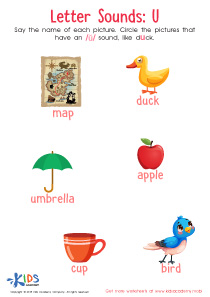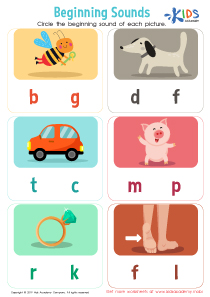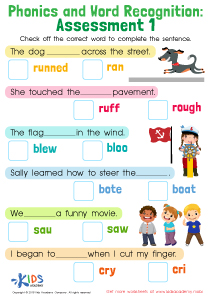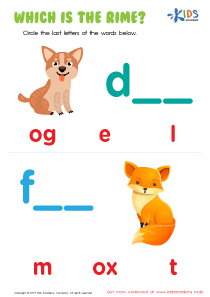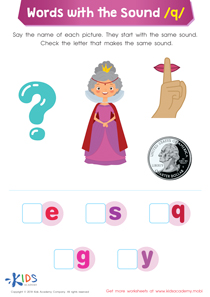Easy Elementary Phonics Worksheets for Ages 4-8
8 filtered results
-
From - To
Discover our collection of Easy Elementary Phonics Worksheets, specially designed for children ages 4-8. These engaging and interactive worksheets make learning phonics fun and effective, helping young learners master the sounds and letters of the alphabet with ease. Perfect for both classroom and home use, our resources include a variety of activities like matching, tracing, and identifying sounds, ensuring a comprehensive phonics foundation. Boost your child’s reading skills and confidence with our expert-crafted, easy-to-follow worksheets that cater to early elementary levels. Visit [Website Name] to download and print these free, educational phonics resources today!


Many Ways to Make a Sound Worksheet
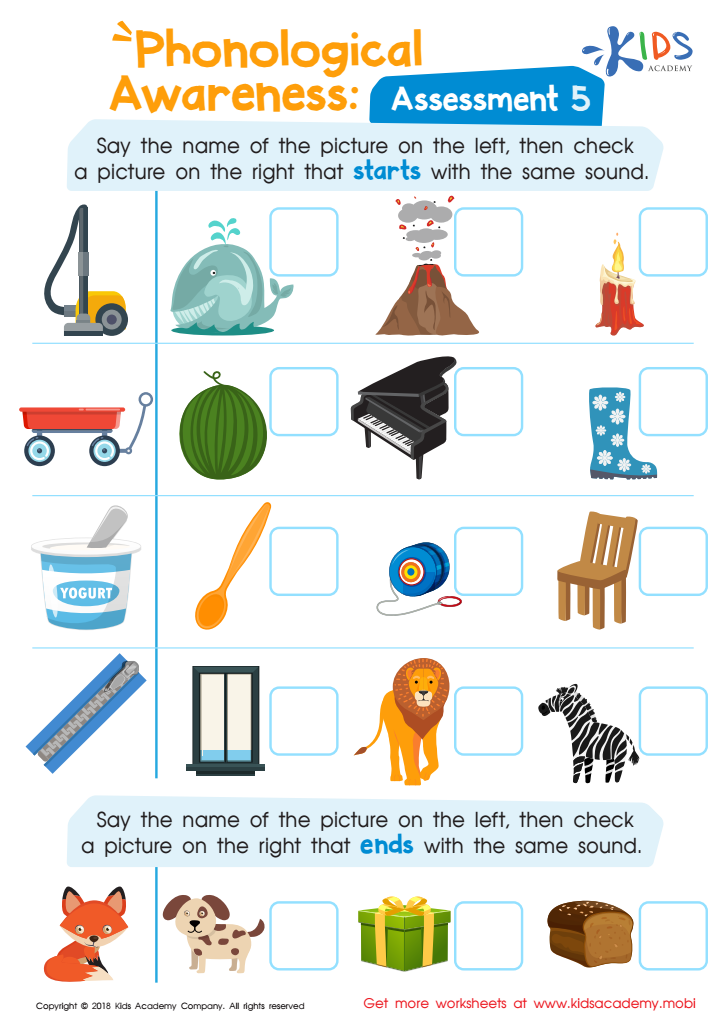

Phonological Awareness: Assessment 5 Worksheet


Different Letters Reading Worksheet
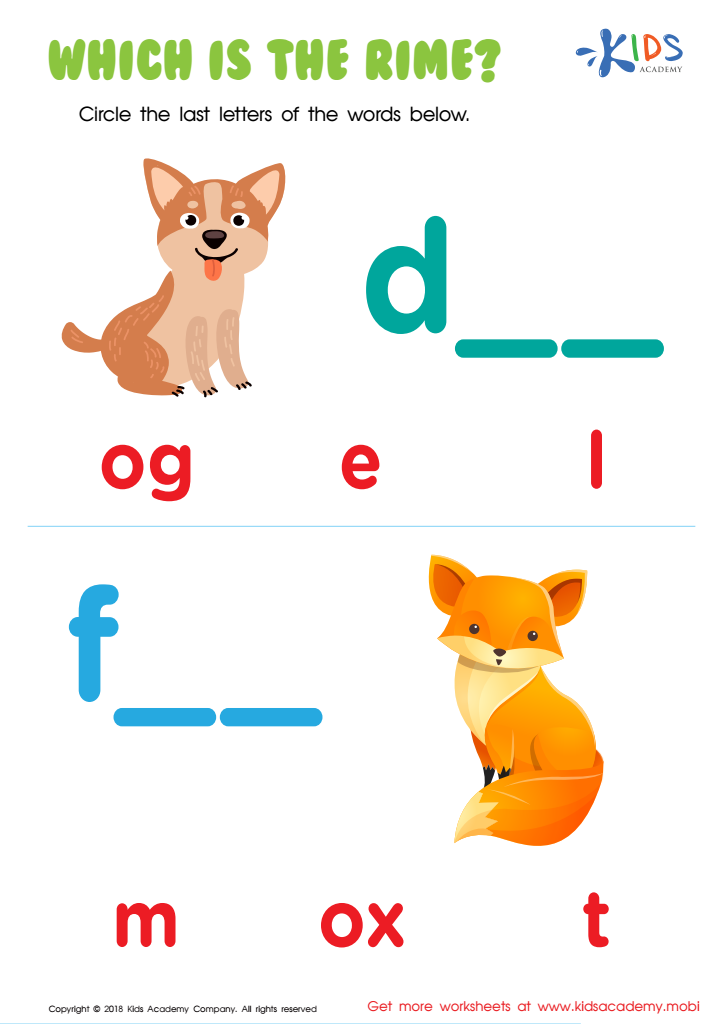

Which Is the Rime? Worksheet
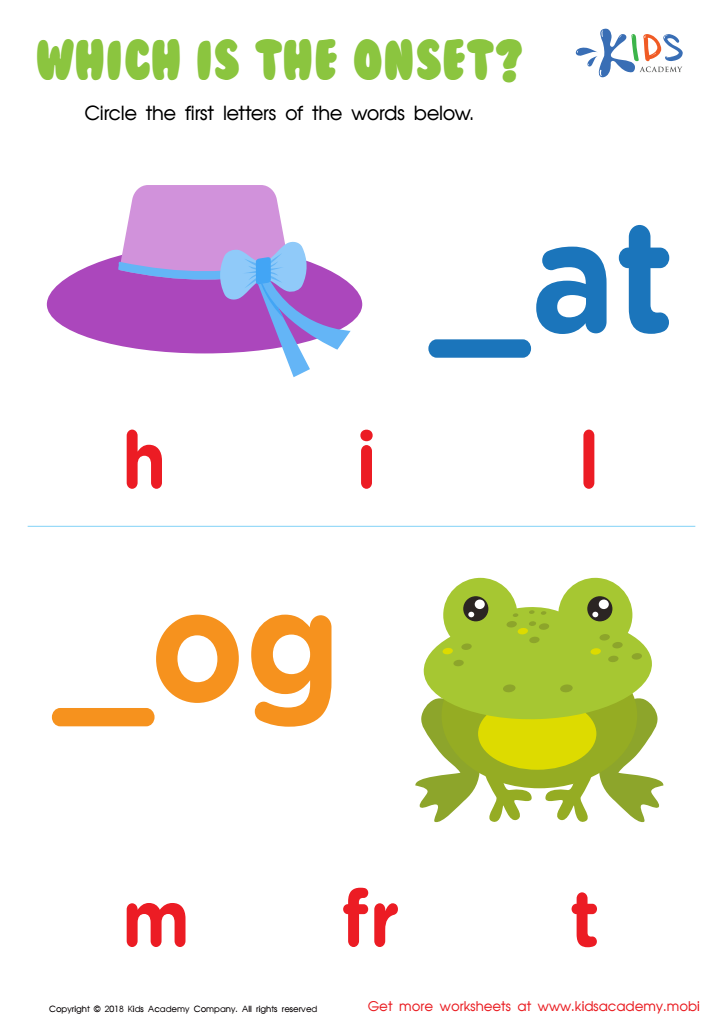

Which Is the Onset? Worksheet
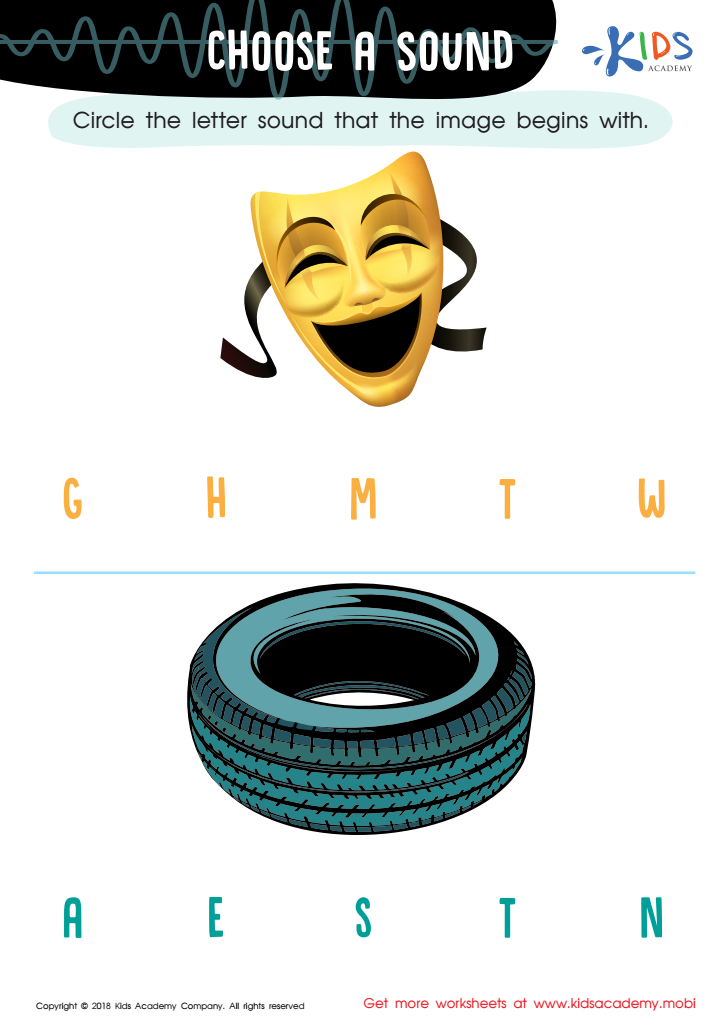

Choose a Sound Worksheet
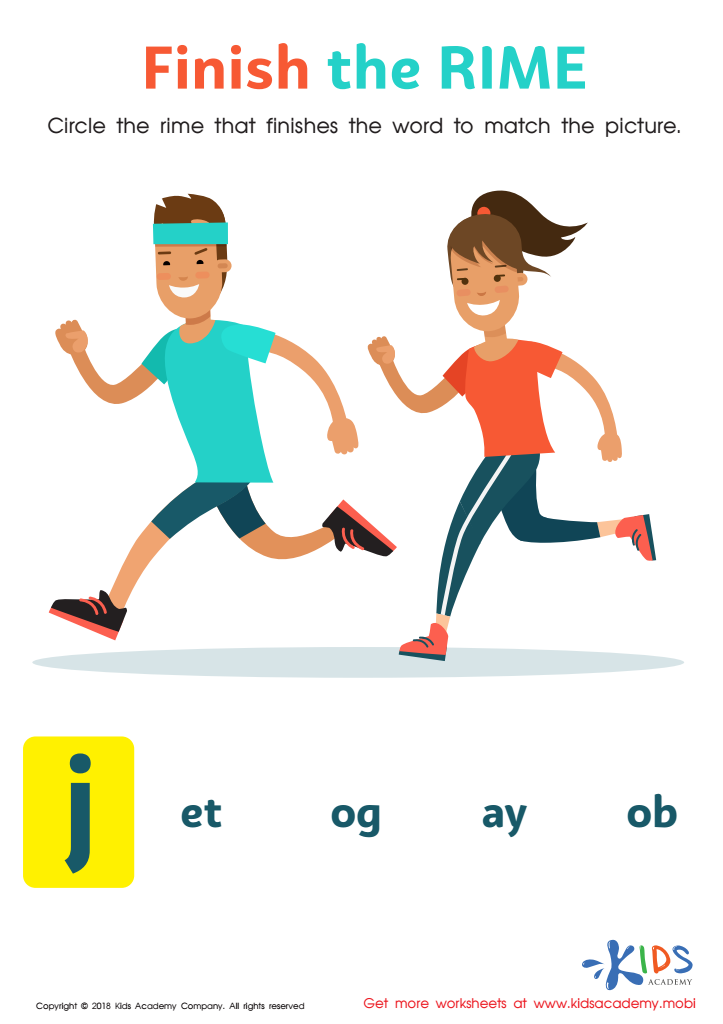

Finish the Rime Worksheet
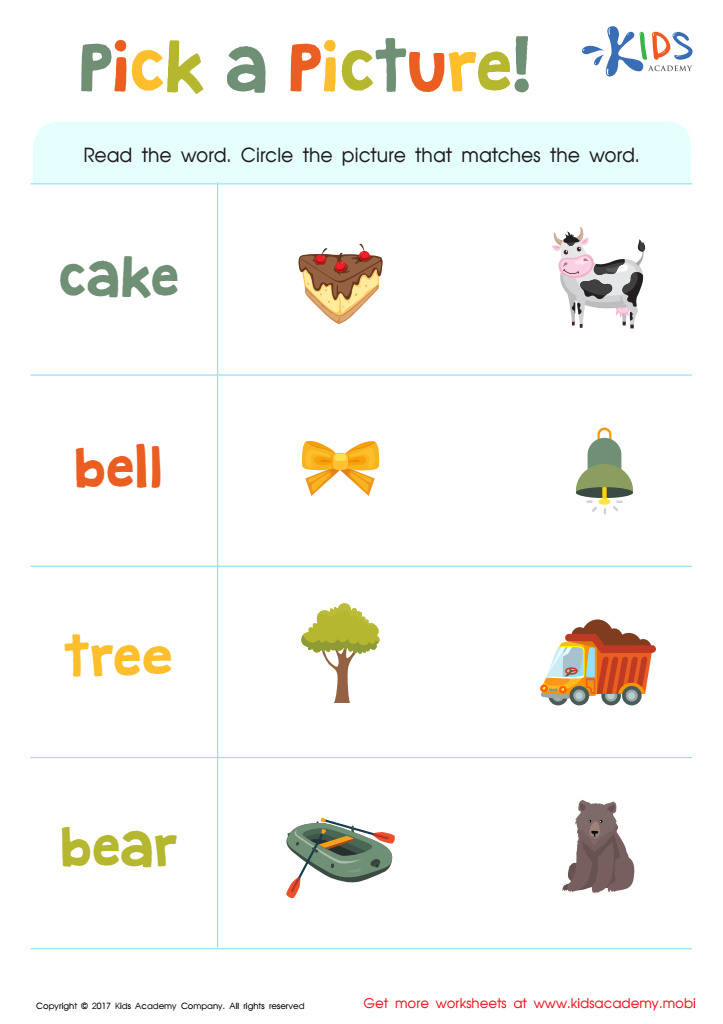

Pick a Picture Word Recognition Worksheet
Easy Elementary Phonics for Ages 4-8 is a critical tool for parents and teachers because it lays the foundation for reading and writing skills essential to lifelong learning. Phonics emphasizes the relationship between letters and sounds, making it integral in helping young children decode words, which bolsters reading fluency and comprehension. At ages 4 to 8, children are highly receptive to learning languages, and phonics instruction capitalizes on this developmental window.
Parents and educators should care about phonics because it empowers children with the skills to read independently. Early successes in reading can foster a love for literature and learning, providing children the confidence to tackle more complex subjects. Phonics also aids in spelling and writing, as understanding sound-letter correspondences enables better word construction.
Incorporating Easy Elementary Phonics ensures a structured and progressive delivery of reading skills. It provides clear, targeted practice that aligns with many educational standards. Engaging activities, games, and stories within phonics programs capture children's interest, making learning enjoyable rather than a chore.
Moreover, children who are proficient in phonics can often achieve higher academic success across varied subjects like math and science because they can efficiently comprehend and follow written instructions. Therefore, Easy Elementary Phonics is not merely an education resource; it’s a vital component in shaping a child’s academic journey and improving their overall learning experience.

 Assign to the classroom
Assign to the classroom


